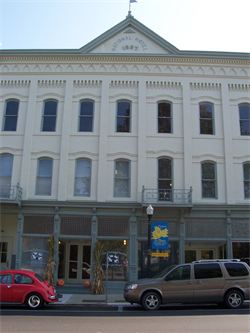Gateway Children’s Services History & Mission
In 1974, the Federal Government mandated that children charged as “Status Offenders” (runaway, truancy, beyond control) could no longer be held in jail.
Since 1981, Gateway Children’s Services has provided an answer to this unfunded mandate by providing 24 hours a day emergency shelter to this at-risk and largely neglected population of Kentucky’s children. Gateway began a national model project by initially serving a seven-county area.
Today, Gateway Children's Services serves the entire state of Kentucky. Many of our at-risk children in our care are homeless, have attempted suicide, and about one third of our residents have been the victims of physical, sexual abuse or human trafficking.
- In 2005, with no additional funding we began our treatment program.
- In 2007, Gateway received accreditation status from the Council on Accreditation. This national award certifies that GCS meets the highest national standards and provides top quality services to the communities it serves.
- In 2008, Gateway Children’s Services introduced our new cutting edge treatment program and moved from an 8 bed facility to a 28 bed facility.
- In 2013, Therapeutic Foster Care and Adoption Services were added.
- In 2015, Outpatient Behavioral Health and Substance Abuse Services were added.
- In 2021, GCS Residential Treatment Program became a certified as a Qualified Residential Treatment Program (QRTP) offering many evidence based programs in human trafficking and substance miuse.
- In 2022, Gateway Children's Services launched our Community Response program providing services to children and families in Bath, Clark, Montgomery, Powell and Rowan counties.
We are accredited through the Council on Accreditation, a Service of Social Current, licensed by the Kentucky Office of Inspector General, and a member of the Children's Alliance.

The National Hotel
Gateway Children’s Services is located in the landmark National Hotel building in Mount Sterling, Kentucky. This historic landmark, with a total of 18,135 square footage, has been around for more than two centuries. A brick in the northeast portion of the building has the date “1813” inscribed on it, and the first known hotel at this address can be dated to 1849 and it was called the Union House. The name of the hotel changed several times over the next few decades. After the Union, it became the Sterling House, the Roberts’ House, and finally the Coleman House.
It is unknown when the Coleman House became the National Hotel, but we do know the building’s prominence came into existence when two men from Flemingsburg named M.A. Weedon and Will Botts purchased the hotel.
At one time the south side of the building had wooden stairwells and porches. When Weedon and Botts took ownership, they began an extensive renovation. The stairwells and porches were removed to make way for brick and stone additions.
The present façade was added to the building. It is believed the building came to be known as the “National Hotel” around 1887 when the building renovations were complete. The hotel had changed ownership again and Frank Hudson had purchased the building.
Around 1890 the hotel had grown so large that an annex had to be added, also known as the “Redmond Building”. The National Hotel was the grandest, most luxurious hotel in Mt. Sterling.
It was the place to see and be seen. The first floor contained the lobby, the front desk, a tavern, and a large dining room. The National Hotel hosted many lavish banquets in its beautiful dining room. The dining room patrons could enjoy regional favorites like roast turkey or old Kentucky ham. The hotel also served delicacies like fresh oysters which arrived daily by train from Baltimore. As always, times change and the fantastic structures of yesterday lose their place of prestige in a community.
Today, the beauty and prominence of this historic building was restored by Daren Turner of Lexington. Many original attributes can still be seen today like the original wooden floors, the embossed tin ceilings and the beautiful original leaded glass which is located on the outside of the building.
Gateway Children’s Services moved into this landmark in 2008 to serve children from across the Commonwealth. In 2008, the building was renamed the “Adrian Arnold Building” in honor of the retired state legislator and GCS advocate, Adrian Arnold.
In 2018, the building was purchased by Gateway Children’s Services and we continue to care for this historic downtown landmark.
Special thanks to Judge Caswell Lane for the information contained herein.




